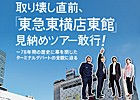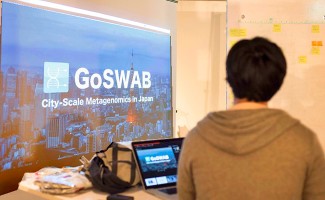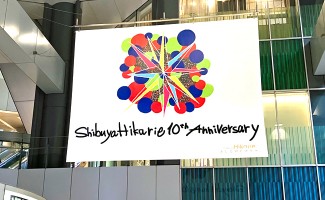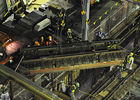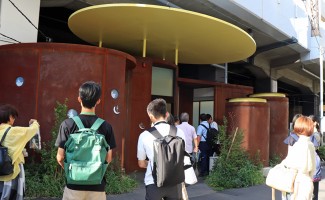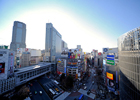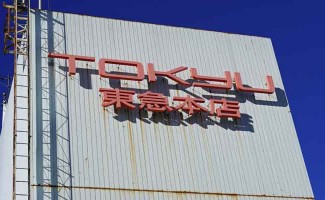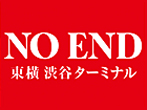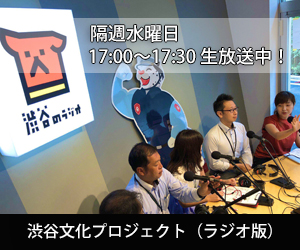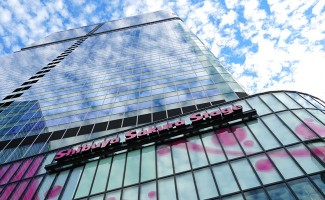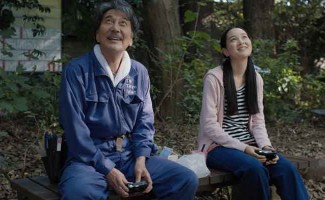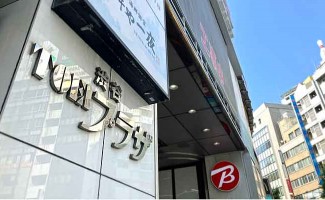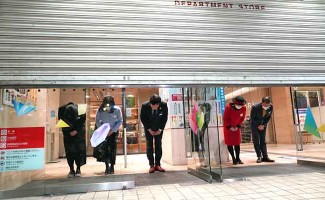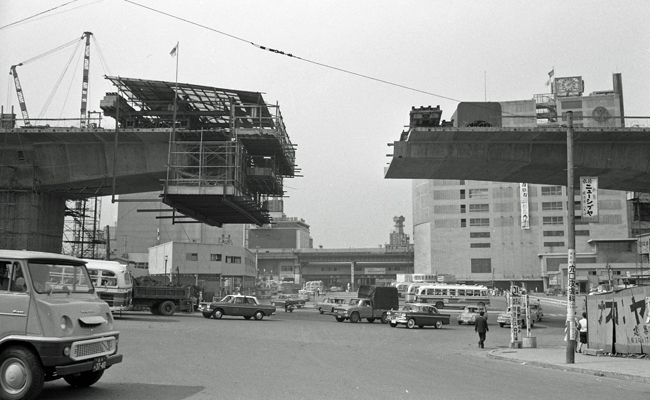
Shibuya of that day, looking back from the photographs of today and age 4
Theme: "Capital Highway No. 3 Shibuya Line, near completion"
"Shibuya of that day" is a photo gallery that looks back on the history of the town from the photos of Shibuya in "Old" and "Now". When reviewing "old photos" again, you can see that various changes such as the cityscape of Shibuya at the time, people's living, fashion, etc. are connected to Shibuya today. In this project, I will compare the photos of Shibuya of "old" and "now", looking back on the old steps in the city of Shibuya and wanting to find "new discoveries" and "awareness" from the old photos. This time, which will be the 4th time, I would like to pay attention to the landscape of the "Capital Highway No. 3 Shibuya Line" near completion as we aim at the 1964 Tokyo Olympics.
The main picture is a picture taken of the landscape that the construction work of "Capital high speed No. 3 Shibuya line" advances overhead of the National Highway No. 246 in 1963 (Showa 38 years) approaching the Tokyo Olympic Games next year. It came across Sapporo-ku town on Route 246 and faced the west entrance of Shibuya station. In order to respond to the motorization that visits in the near future, the construction plan of the Metropolitan expressway will be examined seriously around the late 1950s. In addition, following the fact that the Tokyo Olympic Games bid was decided in 1959, the plan quickly accelerated.
Construction of the Metropolitan expressway started from the opening of the opening of Kyobashi - Shibaura (4.5 km) on December 20, 1962, according to the history page of the capital high history page "Capital High Driver 's Site", 1963 On December 1, 1964, Honmachi - Kyobashi (1.9 km), Shibaura - Suzugamori (6.1 km), Kurei bridge - Edobashi JCT (0.6 km) followed and on August 2, 1964 Suzugamori - Airport West (4.8 km), Shiodome JCT - Shinbashi (0.3 km), Kanda bridge - Hatsudai (9.8 km), Kurei bridge - Kanda bridge (0.4 km) opening. In addition, Miyakezaka JCT - Kasumigaseki (1.4 km), the Hamasaki Bridge JCT - Shibakoen (1.4 km), Shibuya Line Shibuya - Shibuya (1.3 km) on October 1, Is open. Only nine days before the opening ceremony of the Olympics, it is difficult to imagine that the construction of a sudden construction was under way in the severe construction period, with the opening of the Shibuya Line. Along with the maintenance of this capital city, we have connected "Olympic athletes village (now · Yoyogi Park)" and "National Stadium" from "Haneda Airport", avoiding traffic congestion in Tokyo during the Olympic society, It realized shortening. As far as I can see pictures, as far as today, a state that many cars are entering and exiting Shibuya station west exit, national highway No. 246 line is not seen, but traffic congestion is a problem as the number of cars in the city increases It seems that it is the era when I started
<Reference>
Capital High Drivers' Site
http://www.shutoko.jp/fun/history/
By the way, "Tokyo Metropolitan Expressway No. 3 Shibuya Line" has a viaduct from Roppongi Dori toward National Route No. 246, crossing Shibuya Station (JR YAMANOTE LINE , TOKYU TOYOKO LINE ) with valley topography, but this construction is also a straight line It did not seem to go. In the construction of the viaduct, a method called "cantilever (Devidark)" was used, which was used to bridge the bridge to places where scaffolding can not be made, such as valleys in the mountainous area. It is said that it was the first attempt in the urban area where the number of passengers getting in and out, cars and trams, etc. come and go with a construction method where concrete is extended on both sides while maintaining balance from one bridge pier. The Yoyogi Gymnasium designed by Mr. Kenshita Tange has applied a “suspension bridge” technology and has a large roof, but it can be seen that the technology for creating a large bridge supports the Olympics last time. In a sense, the bridge can be said to be a structure that combines human wisdom and effort.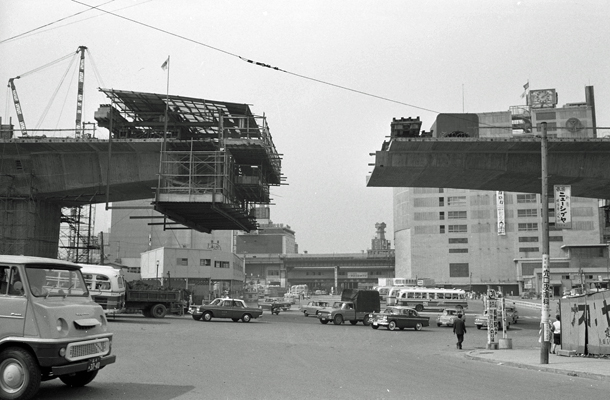 Photo provision = Shibuya Ward local photograph preservation party
Photo provision = Shibuya Ward local photograph preservation party
By the way, the picture is a piece of concrete that gradually overhangs from the two piers, one step before the construction at the central closed part. You can perceive something like the momentum of the city in front of the Olympics from this picture.
<Reference>
Kajima Corporation "Featured TOKYO 1964"https://www.kajima.co.jp/news/digest/sep_2014/feature/index-j.html
Cantilever Technical Committee
http://www.cantilever-method.org/
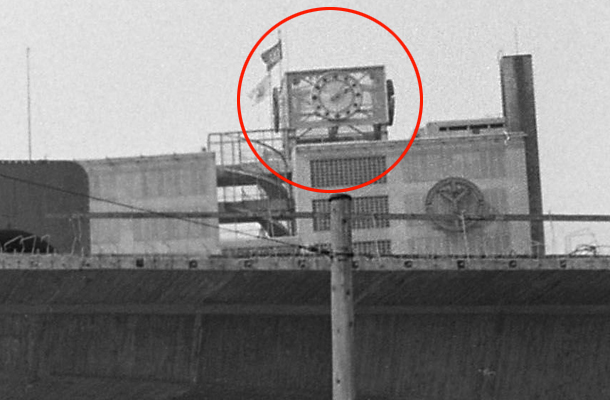 Let's look at information other than "Tokyo Metropolitan Expressway". First of all, the large building seen in the back right of the bridge is "Tokyu Department Store West Building". The main difference with the present is that a clock tower is installed on the roof floor. The building was the tallest building in Tokyo at the time of 1954 (Showa 29), when the Nishikan (at the time of its opening, "Tokyu Conference") was opened on the 11th floor 43 meters above ground. The clock tower at the top of the tallest building must have been a symbol seen from anywhere in the city. Furthermore, the unique design of the building, designed by architect Sakakura Junzo, is that it includes a tram and tram station on the second floor and a GINZA LINE home on the third floor. If you look closely at the photos, you can see that the GINZA LINE just jumps out of the third floor. It can be said that it is a measure of bitterness that makes effective use of narrow land, but it will be possible to get a glimpse of "a near-future city shape" along with the three-dimensionalization of the Metropolitan Expressway. By the way, Tamaden closed the curtain in the history of about 60 years while being deceived in 1969 (Showa 44), but still calls the second floor ticket gate directly connected to SHIBUYA MARKCITY JR YAMANOTE LINE "Tamagawaguchi" Is that remnant.
Let's look at information other than "Tokyo Metropolitan Expressway". First of all, the large building seen in the back right of the bridge is "Tokyu Department Store West Building". The main difference with the present is that a clock tower is installed on the roof floor. The building was the tallest building in Tokyo at the time of 1954 (Showa 29), when the Nishikan (at the time of its opening, "Tokyu Conference") was opened on the 11th floor 43 meters above ground. The clock tower at the top of the tallest building must have been a symbol seen from anywhere in the city. Furthermore, the unique design of the building, designed by architect Sakakura Junzo, is that it includes a tram and tram station on the second floor and a GINZA LINE home on the third floor. If you look closely at the photos, you can see that the GINZA LINE just jumps out of the third floor. It can be said that it is a measure of bitterness that makes effective use of narrow land, but it will be possible to get a glimpse of "a near-future city shape" along with the three-dimensionalization of the Metropolitan Expressway. By the way, Tamaden closed the curtain in the history of about 60 years while being deceived in 1969 (Showa 44), but still calls the second floor ticket gate directly connected to SHIBUYA MARKCITY JR YAMANOTE LINE "Tamagawaguchi" Is that remnant.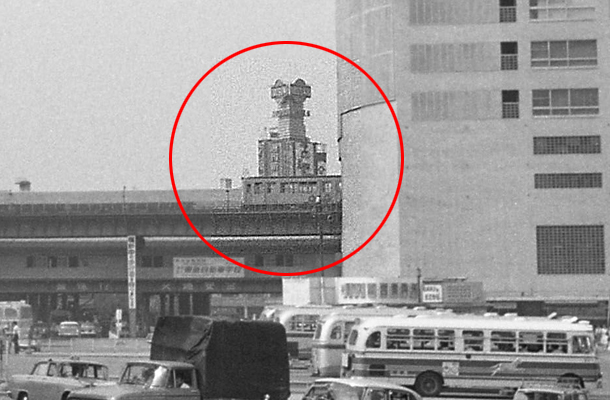 The building seen behind GINZA LINE is the Minegishi Building (now Shibuya Q-FRONT). Shibuya Toho Theater and disco "BIG APPLE (big apple)" etc. moved in and it was one of the playgrounds of young people representing Shibuya. After that, in December 1999, when the keyword "IT Revolution" became popular, a commercial facility "Shibuya Q-FRONT" equipped with large digital signage on the wall opened at the site of the Minegashi Building in December 1999, and everyone knows today The scenery in front of Shibuya Station will be formed.
The building seen behind GINZA LINE is the Minegishi Building (now Shibuya Q-FRONT). Shibuya Toho Theater and disco "BIG APPLE (big apple)" etc. moved in and it was one of the playgrounds of young people representing Shibuya. After that, in December 1999, when the keyword "IT Revolution" became popular, a commercial facility "Shibuya Q-FRONT" equipped with large digital signage on the wall opened at the site of the Minegashi Building in December 1999, and everyone knows today The scenery in front of Shibuya Station will be formed.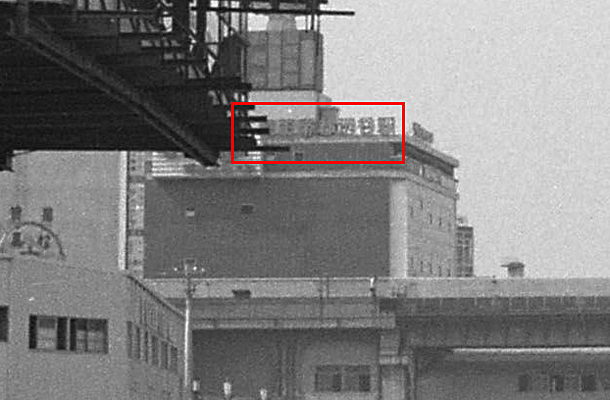 On the other hand, the station building of Keio Teito (now KEIO CORPORATION) is visible in the far left of the Metropolitan Expressway. Although the image resolution is low, it can be read somehow that the sign "Keio Teito Shibuya Station" is installed on the roof of the building. The station building which was newly established in 1960 (Showa 35) is connected with Tokyu Department Store West Building by the communication passage, and it is easy to transfer of YAMANOTE LINE, subway GINZA LINE, Toyoko Line, Tamaden (Tamagawa Line) did. After that, the building will be reborn as "SHIBUYA MARKCITY" in 2000 (Heisei 12), including a landing of INOKASHIRA LINE, a garage of GINZA LINE, a hotel and commercial facilities. By the way, there is no figure of "Tokyu Plaza" (opened in 1965) which is currently under construction for rebuilding in this photo, and it is made to realize again the length of the year and month over half a century.
On the other hand, the station building of Keio Teito (now KEIO CORPORATION) is visible in the far left of the Metropolitan Expressway. Although the image resolution is low, it can be read somehow that the sign "Keio Teito Shibuya Station" is installed on the roof of the building. The station building which was newly established in 1960 (Showa 35) is connected with Tokyu Department Store West Building by the communication passage, and it is easy to transfer of YAMANOTE LINE, subway GINZA LINE, Toyoko Line, Tamaden (Tamagawa Line) did. After that, the building will be reborn as "SHIBUYA MARKCITY" in 2000 (Heisei 12), including a landing of INOKASHIRA LINE, a garage of GINZA LINE, a hotel and commercial facilities. By the way, there is no figure of "Tokyu Plaza" (opened in 1965) which is currently under construction for rebuilding in this photo, and it is made to realize again the length of the year and month over half a century.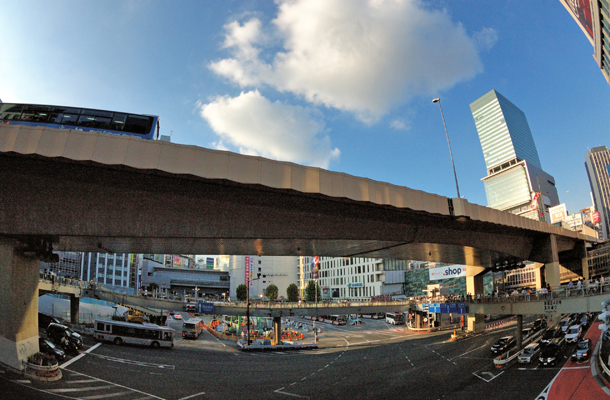 Photographed on 30th October 2017 (Photographer: Yutaka Sato)
Photographed on 30th October 2017 (Photographer: Yutaka Sato)
In the future, in the area, the new "Tokyu Plaza" will be born in the fall of 2019, the redevelopment of "Shibuya station Sakuragaokuchi district" around 2022 after the Olympics and "Tokyu department store western pavilion / south wing" by 2027 is planned There. Ten years from now, what kind of landscape is the picture taken from the same place? Surely, it must be a big transformation that is not comparable with this half a century.
Finally one story behind. When I told Mr. Yutaka Sato, a photographer who received cooperation every time, I talked about "the capital high speed No. 3 Shibuya line", at that time, "How much do you think is the capital high speed No. 3 Shibuya line? "I was asked a sudden question. When answering "Is it a charge? I do not consider it at all", he told me the price while saying "I want to know". The answer is "20 yen". The moment I heard the answer, I instinctively cried "Cheap!" Is this expensive or cheap? . According to a survey by the Ministry of Health, Labor and Welfare, the initial salary of the university graduate in 1964 is 21,200 yen. It seems that it was not such a stupid thing, considering about 1/1000 of the ratio of the initial salary.
<Back number>
-"Shibuya of that day" Vo.1 theme: "Yoyogi Stadium" (published November 21, 2017)
-"Shibuya of that day" Vo.2 theme: "Harajuku station" (December 28, 2017 published)
-"Shibuya of that day" Vo.3 theme: "Shibuya station Hachiko front square" (published February 14, 2018)

Editorial department · Fuji Itakashi
Shibuya registrar. In addition to Shibuya of Culture information, seasonal news and topics, it will spell write that feel every day.
